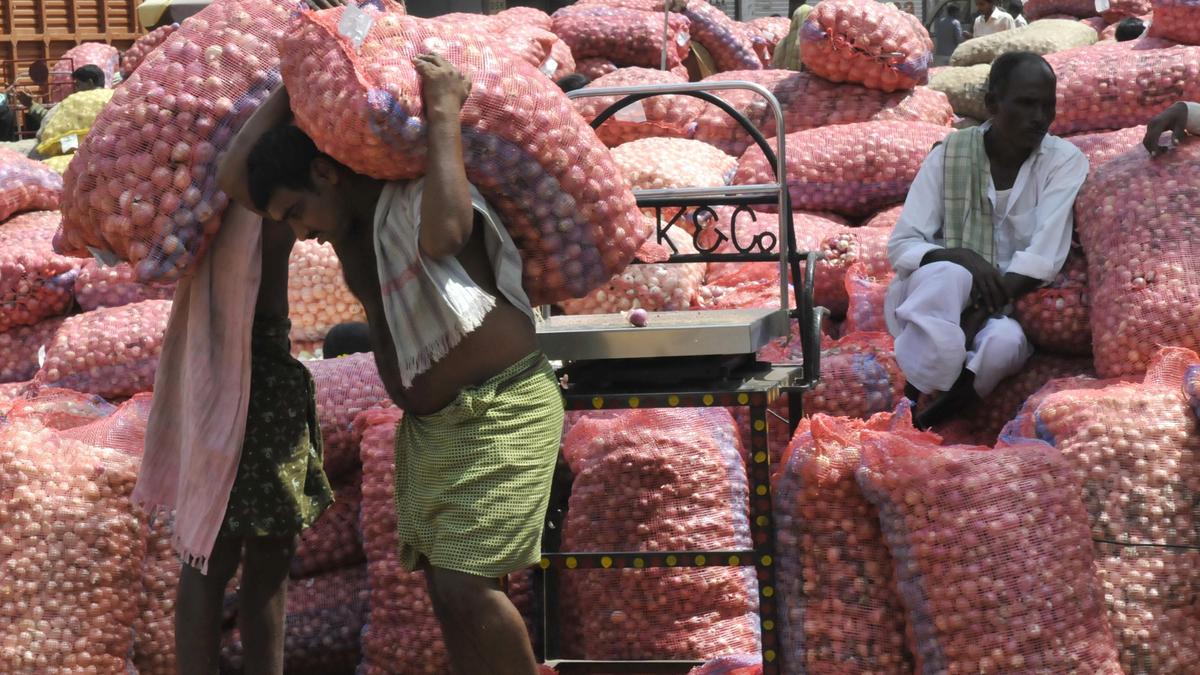
espite the government’s claims about ensuring maize procurement at the minimum support price (MSP) by linking them with ethanol producing distilleries, the all India average rate was ₹1,821 per quintal in October
| Photo Credit:
SIVAKUMAR PV
Mandi prices of kharif crops in key producing States show wide variations when compared with all India average rates. Experts attribute this to local factors and inefficient data collection. Unless there is market reforms and close monitoring of farm-gate prices, farmers will not receive the benefit, they said.
For instance, against the all India average price of moong (green gram) in October at ₹6,617/quintal, the State average which farmers in Uttar Pradesh realised was ₹8,704/quintal whereas in Haryana the crop was sold at ₹4,973/quintal. The moong in Kharif season’s largest producing State Rajasthan was ₹6,470/quintal and ₹5,492/quintal.
Despite the government’s claims about ensuring maize procurement at the minimum support price (MSP) by linking them with ethanol producing distilleries, the all India average rate was ₹1,821 per quintal in October, whereas in Madhya Pradesh it was as low as ₹1,580/quintal, in Rajasthan ₹1,724/quintal and in Karnataka ₹1,931/quintal. Uttar Pradesh reported highest ₹2,284/quintal and Haryana reported ₹2,378/quintal, which is close to the maize MSP of ₹2,400, according to official data compiled by Agmarknet portal.
“It is true that prices vary between States, mainly there used to be wide gap between consuming State and producing State. But, in the last few years, the gap in prices, even between major producing States, have widened, which need further study. One aspect could be quality while there may be error in data compilation too,” said a former union agriculture secretary.
As mandi (agriculture market yard) rates in Uttar Pradesh are showing higher rates compared to most other competing producing States in major kharif crops, official sources said there may be anomaly in reporting prices, which is a domain under the State government.
Competition among buyers
On the other hand, a former senior official of Uttar Pradesh said after the State government allowed traders/companies to directly buy from farmers under a licensing system, the mandi rates also improved as words spread about farmers getting higher than mandi rates at their doorsteps. Competition among buyers may help farmers realise better rates, he added.
“There has to be some monitoring of what prices farmers are receiving in mandis and the rates are artificially brought down when there is collusion between traders and officials. Any abnormal trade, where price was lower than a particular level, should be probed to find out if at all the quality of the commodity was really poor and samples should be tested,” said farmer leader of Madhya Pradesh Kedar Sirohi.
He suggested that enforcing the MSP at fair, average quality (FAQ) standards can help farmers of a leading producing State also get comparable rates with another producing State and narrow the gap. Sirohi also said there has to be grading and drying facility in every mandi and instead of cutting the rate on “claim” (without laboratory/machine testing) of “high” moisture, the crop should be dried first.
After the three farm laws withdrawn, there was no move by the Centre on market reforms, an expert said adding the last attempt to have a uniform market structure (National Policy Framework on Agricultural Marketing) also got buried after objection by Punjab.
Published on November 10, 2025
